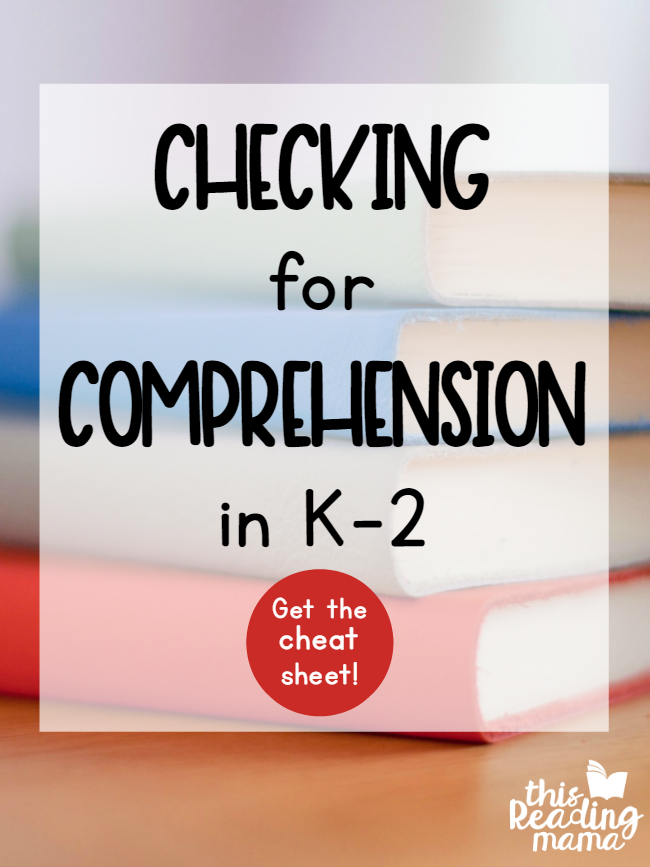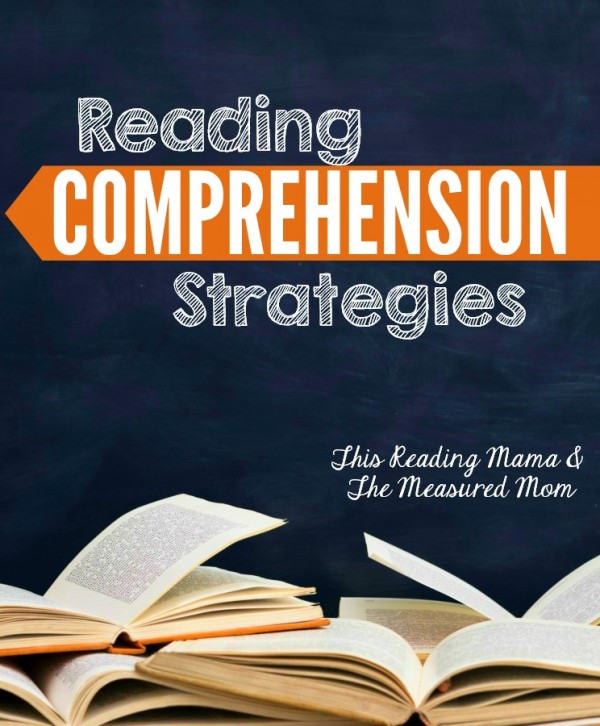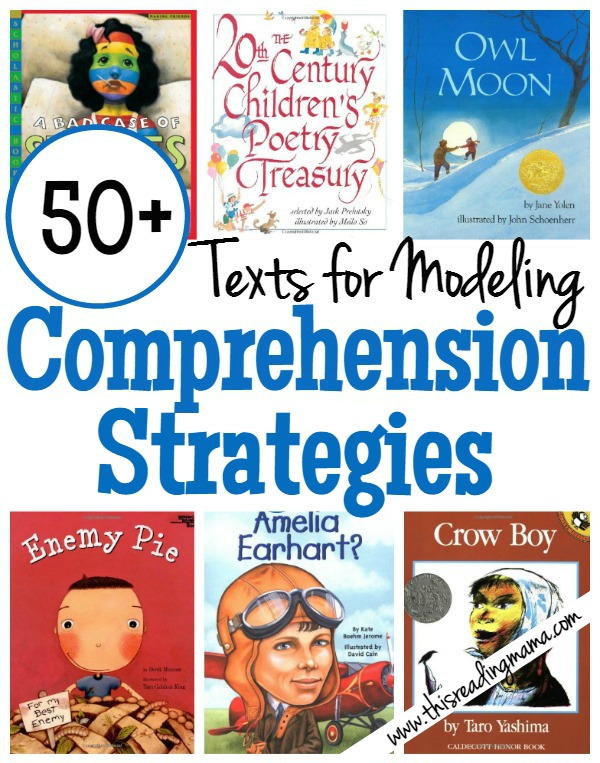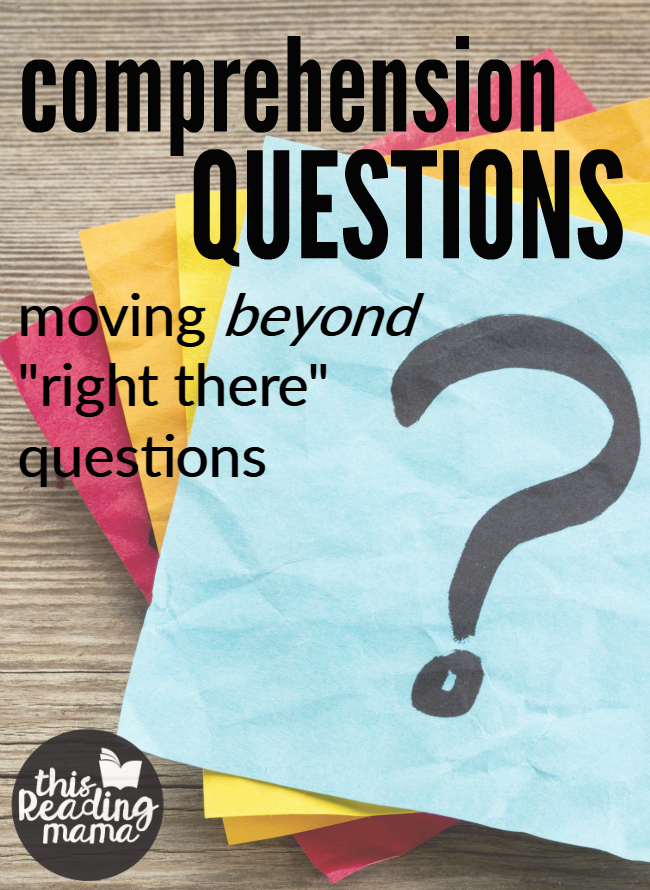Checking comprehension isn’t always as neat and easy as checking to see if a learner knows their math facts.
The way one person processes a text can be be different than another person. And the way that same person processes one kind of text will look different when they read another type of text.
Checking comprehension is as clear as mud now, right?

*This post contains affiliate links.
**Download the free comprehension cheat sheet towards the end of this post.
What is Comprehension?
Simply put, comprehension is understanding. It’s making meaning of and processing the words your eyes are seeing as you decode or recognize words.
I would go so far as to say that reading isn’t really reading unless you’re making meaning, too. Comprehension is vital for reading.
Teaching Comprehension
Teaching comprehension can also look different, depending on the text you’re using. But one thing is clear. There are about 8 comprehension strategies that are common ones that need to be explored in depth with K-2 readers {and beyond!}.
You may enjoy our Reading Comprehension Strategies series with accompanying lessons and printables for each of the comprehension strategies listed below.
1. Making Connections – using what you know to help you connect with what you’re reading. These connections might be with an experience you’ve had (text to self), with another book/movie (text to text), or with things happening in the world (text to world). Read my post on schema to give you more background for teaching this skill.
2. Predicting – using what you know (your schema) to help you predict what might happen next
3. Inferring– using what you know (your schema) and what the author/illustrator gives you to “read between the lines”
4. Visualizing – making a mental image in your head as you read
5. Asking Questions – asking meaningful questions as you read to make you want to read more
6. Determining Importance – discovering what’s important from what’s not too important (needed for summarizing or retelling fiction and retelling nonfiction)
7. Synthesizing – changing and modifying your thinking as you read along
8. Summarizing – being able to tell what you read about in just a few sentences
If you’re looking for books that match each comprehension strategy, check out our comprehension strategies book list! You can even grab the printable comprehension book list of each list!
Checking Comprehension
Now, that we know some of the comprehension strategies, let’s explore three ideas for checking comprehension.
1. Listening to Reader’s Comments & Questions
When kids read aloud, they’ll often pose audible questions to themselves, talk about an illustration, or say something along the lines of, “Boy, I’d be mad if that happened to me!” These are clues that they are processing the information by using comprehension strategies.
As we listen to them talk to themselves, we can make quick observations about which comprehension strategies they are using.
2. Asking Questions
When we ask questions to check understanding, we can gauge their comprehension by their response. This can take the form of verbal response in a discussion or a written response, like in a reading response journal.
When reading one-on-one with kids, I like to ask questions throughout the text instead of posing them all at the end.
Our youngest learners are still learning the basics of characters, setting, problem, and solution. So easy, literal questions may be appropriate. Ones like, “Who was the main character in the story?”
But as readers move past this, it’s important to focus more on deeper comprehension questions. You can find some in the discussion questions I created.
3. Listening to Retellings
Retelling is an art that’s actually trickier than you might think!
Retelling requires that readers know what is and isn’t important (determining importance). It also requires the reader to understand how the text is organized or put together by the author. This is known as text structure.
Early readers have very little to retell, as their reading texts are super simple and predictable. Retelling happens more as the teacher models and they practice during a read aloud with quality books.
As readers grow in their thinking (and text level), we need to expect more though. I’m excited to share two retelling charts that have revolutionized the retellings of my own readers. I have a free Fiction Retelling Chart (SCOOP) and a Nonfiction Retelling Chart (MUSH) available!
Get the cheat sheet!
You will be added to our VIP list for Teaching Every Reader when you grab this freebie!
Read all the posts in this series!
Enjoy!
~Becky



Leave a Reply